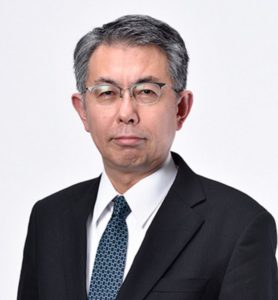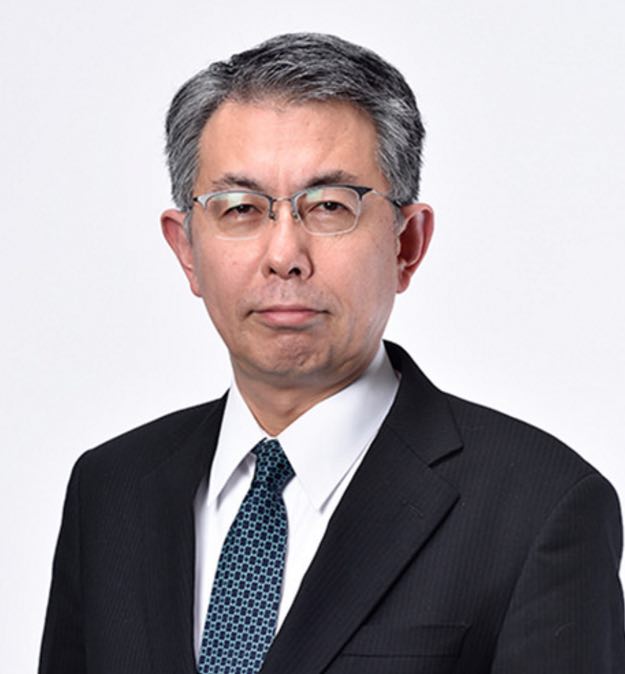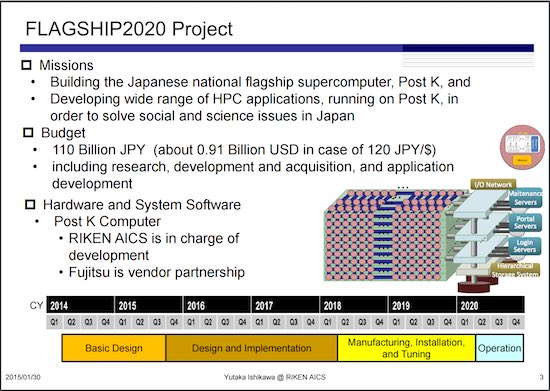
Dr. Yutaka Ishikawa, Project Leader
Development of Post K supercomputer
Nikkei in Japan writes that the Post K supercomputer is facing 1-2 year delay for deployment as part of the Flagship2020 project. Originally targeted for completion in 2020, the ARM-based Post K supercomputer has a performance target of being 100 times faster than the original K computer within a power envelope that will only be 3-4 times that of its predecessor. Nikkei cites semiconductor development issues as the reason for the project delay.
“The post K computer is being developed to help solve top-priority issues expected in the 2020s,” said Dr. Yutaka Ishikawa, Project Leader, Development of Post K supercomputer. “With the completion of the post K computer, we expect that problems taking a year to solve on the current system will only take a few days on the new one. As a result, we will also be able to address a broader range of problems and make use of the new supercomputer in novel, innovative ways. The new system will become an essential tool for solving problems in the areas of bioscience, disaster prevention, environmental issues, energy, and manufacturing. We face a number of technical challenges in creating the new system. In its development, we aim for a system that is highly productive and reliable, and which maintains a balance between performance and power consumption. To achieve this, we must develop both hardware and software that enable high application performance with low power consumption. We also need to build support software that makes it easy to create applications that take full advantage the post K computer’s performance. The hardware we develop will use leading-edge advanced micro-fabrication processing technology and ensure that the post K computer maintains a high level of reliability and fault tolerance.”
The post K computer development plan under the FLAGSHIP 2020 Project, initiated by the Ministry of Education, Culture, Sports, Science and Technology in 2014, has set the target of developing the next generation flagship supercomputer of Japan (the successor of the K computer) along with a wide range of applications that will address top priority social and scientific issues. The name of the project was chosen to indicate that the goal is to develop a system that will lead Japan, acting as a “flagship,” in the development of the supercomputer based on next-generation technologies. The post K computer will be easy to use and it’s going to yield important scientific results. The term FLAGSHIP is also an abbreviation of Future LAtency core-based General-purpose Supercomputer with HIgh Productivity.
“RIKEN AICS has been appointed as the main organization for leading the development of the post K with the aim of launching operations around 2020. We are committed to build a world-leading, general purpose supercomputer and its applications in a coordinated way to enable maximum use of the research results and the technologies developed with the K computer. Different institutes will be in charge of the high priority social and scientific issues, which have been identified for implementation on the post K computer.”
Download Yutaka Ishikawa’s presentation on the Flagship2020 Project (PDF)





